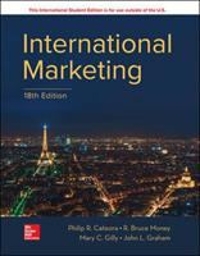*Q14. The Great Depression. The US Great Depression of the 1930s was one of the longest and most severe downturns in economic history. Even today, there is not consensus on the causes of the depression. Below, you will find some data from the depression as well as a couple of the leading hypotheses which can be expressed using the IS-LM model. Selected Statistics for the Great Depression in the United States of America Real Unemp- Nominal Money Price Inflation Money Real Consump Investme Supply loy ment interest tion (2) Level (5) (6) Balances GNP(2) nt (2) rate (1) rate (3) (4) (7) 52.6 203.6 139.6 40.4 5.9 26.6 50.6 1929 3.2 25.8 49.3 -2.60% 52.3 1930 8.9 183.5 130.4 27.4 3.6 53.8 1931 16.3 169.5 126.1 16.8 2.6 24.1 44.8 9.10% 40.2 -10.30% 52.5 24.1 144.2 27 21.1 1932 114.8 112.8 5.3 1.7 19.9 39.3 2.20% 50.6 1933 25.2 141.5 118.1 9.4 21.9 42.2 7.40% 51.9 1934 22 154.3 18 0.8 25.9 42.6 0.90% 60.8 1935 20.3 169.5 125.5 24 0.8 29.6 42.7 0.20% 69.3 1936 17 193.2 138.4 29.9 30.9 4.20% 69.4 1937 143.1 0.9 44.5 14.3 203.2 69.5 1938 19.1 192.9 140.2 17 0.8 30.5 43.9 1.30% 79.2 1939 17.2 209.4 148.2 24.7 0.6 34.2 43.2 -1.60% 43.9 1.60% 227.2 0.6 39.7 90.4 1940 14.6 155.7 33 Notes: (1) Unemployment rate is series D9. (2) GNP, Consumption and Investment are series F3, F48 and F52. All measured in billions of 1958 (3) Prime commercial paper rate, 4-6 months, series x445 (4) Series x414, currency plus demand deposits, billions of dollars. (5) GNP deflator (1958=100), E1 (6) Percentage change in price series (7) Calculated by dividing Money supply by the price level and multiplying by 100. Is in billions of 1958 dollars (a) Monetary Contraction. A simplified version of one argument for the cause of the great depression states that the 1929 stock market crash set in motion a series of events which culminated in large scale bank runs, leading to a severe contraction of the money supply. Use the IS-LM model to try to predict the effects of such a contraction. Do your conclusions match the data in the table above? (Remember to consider all of the variables for which the IS-LM model makes predictions.) A contraction in the money supply would cause an upwards shift in the LM curve, in turn meaning a higher interest rate is required for equilibrium in the money market and reducing investment and output. There are issues reconciling this theory with the data however. As much as the money supply fell from 1929-1933, a rapidly declining price level meant that real money balances stayed relatively stable over the same period. In addition to this instead of rising nominal interest rates actually fell dramatically. These are relatively good reasons to doubt the validity of the monetary contraction hypothesis.This hypothesis does a lot better at explaining the data than the previous one. As expected real interest rates rise significantly as output and investment also drop. This explanation also neatly avoids the problem of falling nominal rates. There are issues with this theory which cannot be properly articulated using the presented data. One in particular is that U.S. prices had actually been falling steadily from the mid 1920s, making the change is expectations argument less plausible. In addition to this both of these answers focus heavily on the U.S. experience, when it could be argued that it was the world that brought depression to the U.S., rather than the other way around (Eichengreen Golden Fetters). For Students wishing to learn more about the causes and consequences of the Great Depression, the following books and articles will be of interest. Atack and Passel, A New Economic View of American History (Monetarist) . B. Eicheengreen, The Great Slump revisited, Economic History Review, 1992 (for a more internationalist approach - particularly good for those interested in the gold standard) . P. Temin, 'The Great Depression', in Cambridge Economic History of the USA vol. III (Twentieth Century), ch. 5 . C Kindleberger, The World in Depression 1929-39 (Very much a historical perspective) . Romer, C. 'The Nation in Depression', Journal of Economic Perspectives, 1993.IS LM1 LM Y1 Yo (b) The Money Hypothesis. A second argument focuses on changes in the expected inflation rate. Prices for primary commodities had been falling throughout the 192 0s, and the onset of the 1929 financial crisis and subsequent recession increased deflationary pressures. Use the IS-LM model to predict the effect of consumers changing their expectations from inflation to deflation. How well does this fit with the data? A change from inflationary to deflationary expectations means a contraction in the IS curve, lowering output and nominal interest rates whilst increasing the real interest rate. Firms become more reluctant to borrow money that they believe will become more valuable over time, raising the real value of their debt. This fall in investment is what leads to the contraction in the IS curve. Recall that real rates are given by r = i - n. When expected inflation falls, the direct effect is to increase the real rate, but this pushes down the IS curve (by reducing investment), and this pushes down the nominal rate i, thus partially (but not fully) offsetting the initial increase in the real rate. (If the secondary effect were not smaller than the direct effect then it would take us all the way back to the original equilibrium, which is implausible.) ISo IS1 I.M Lo Y1









